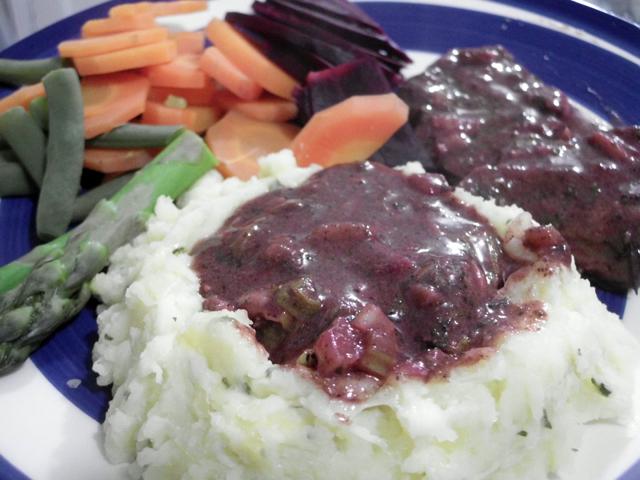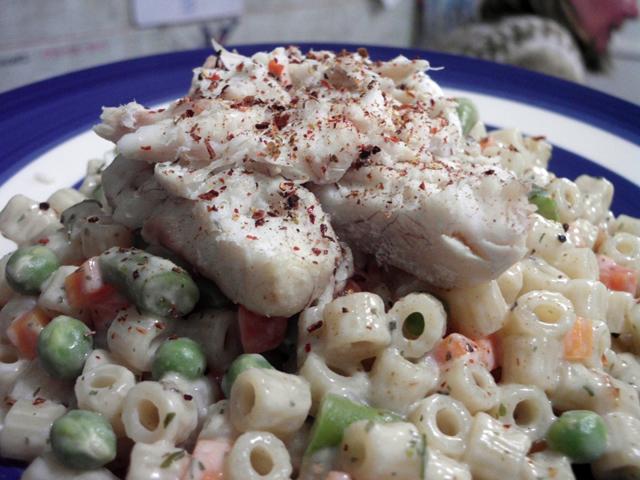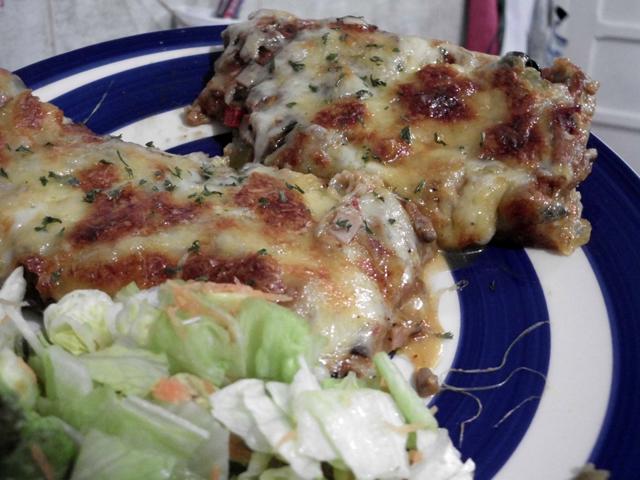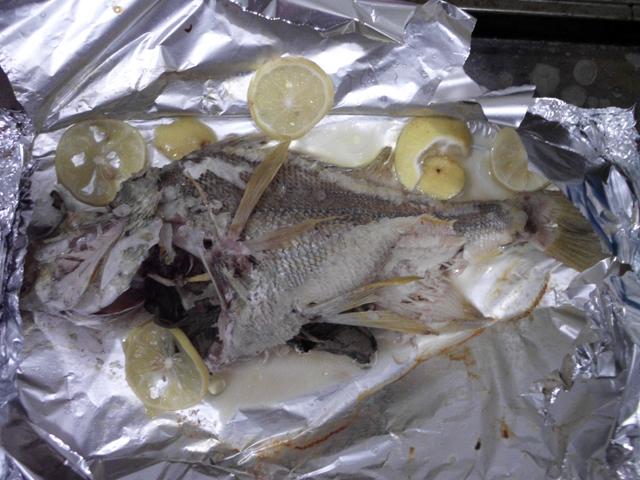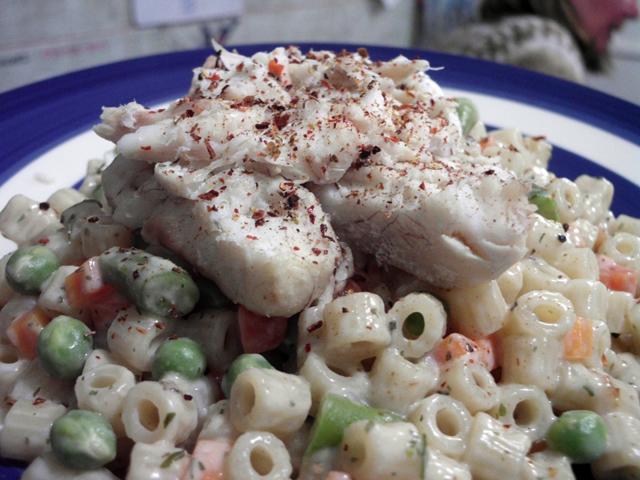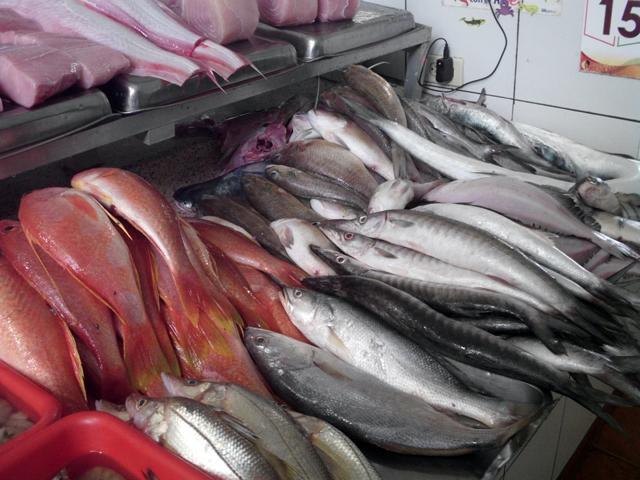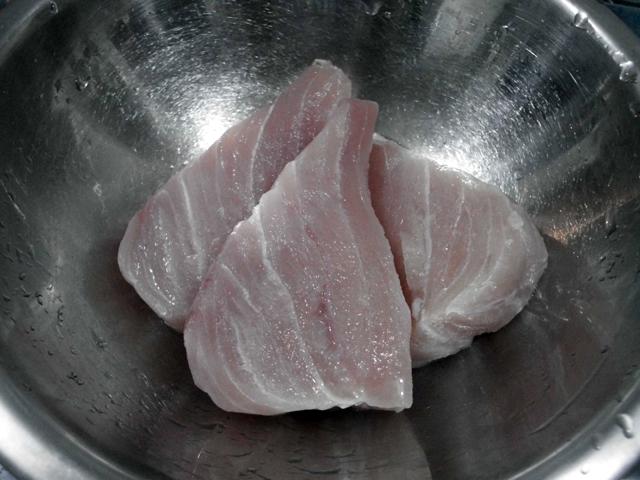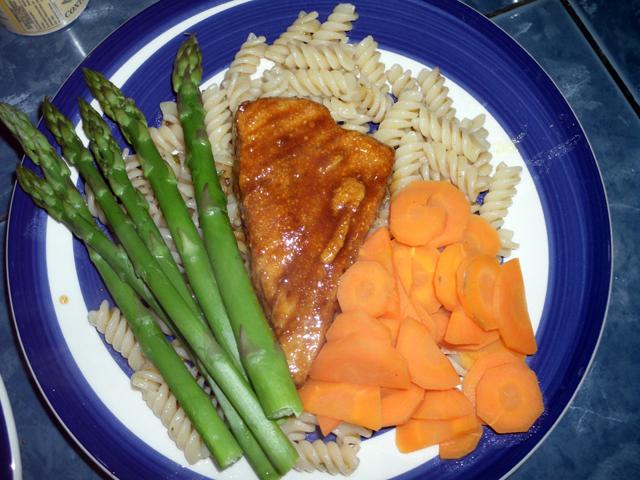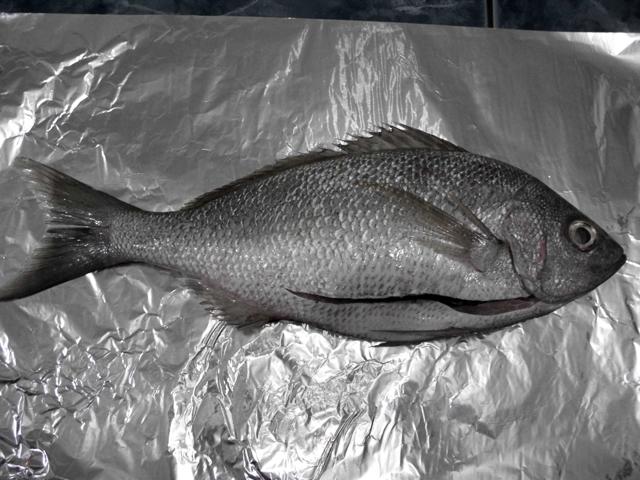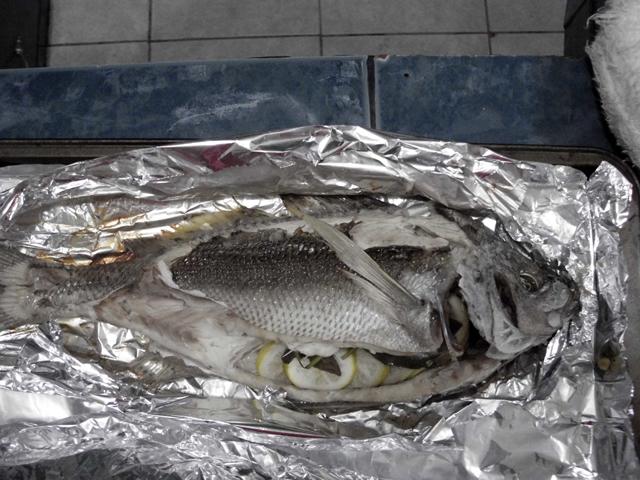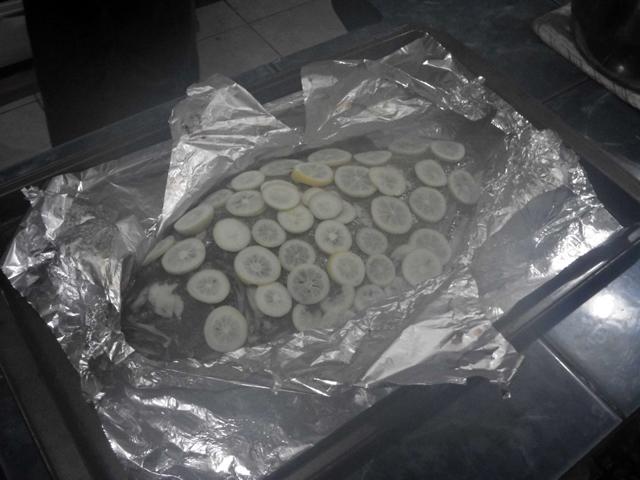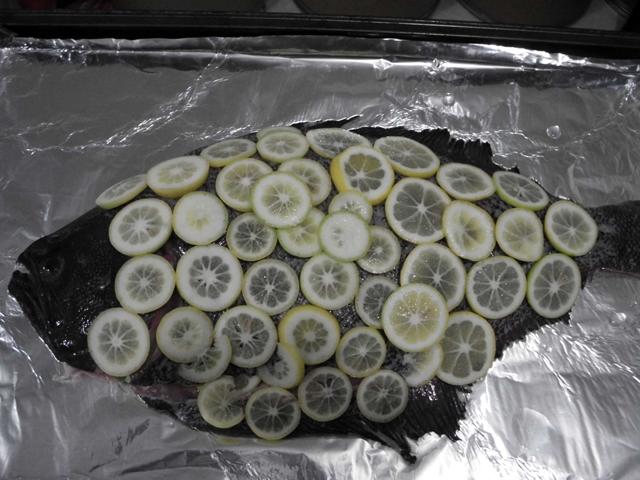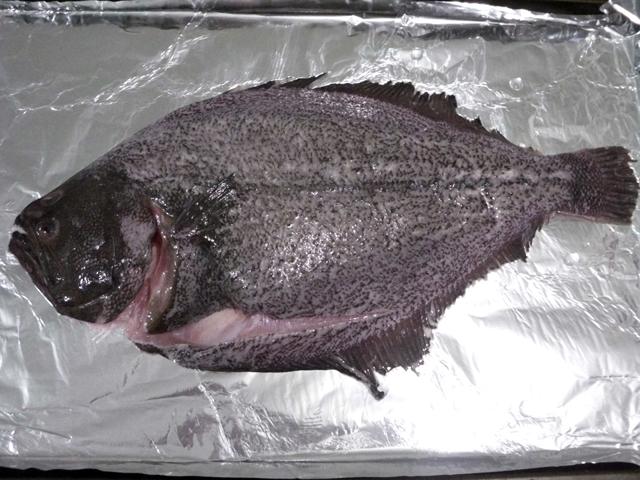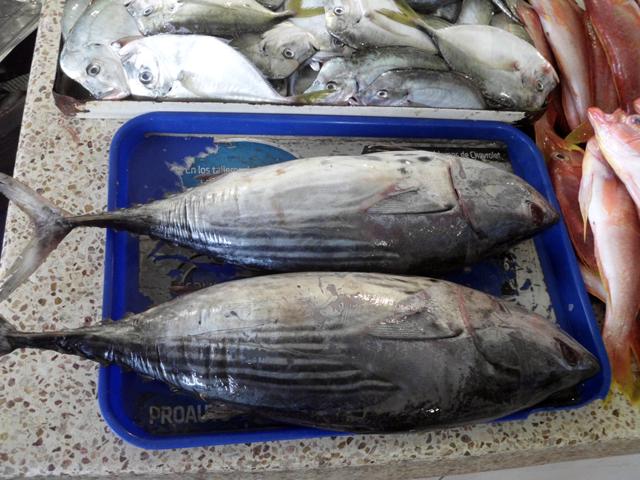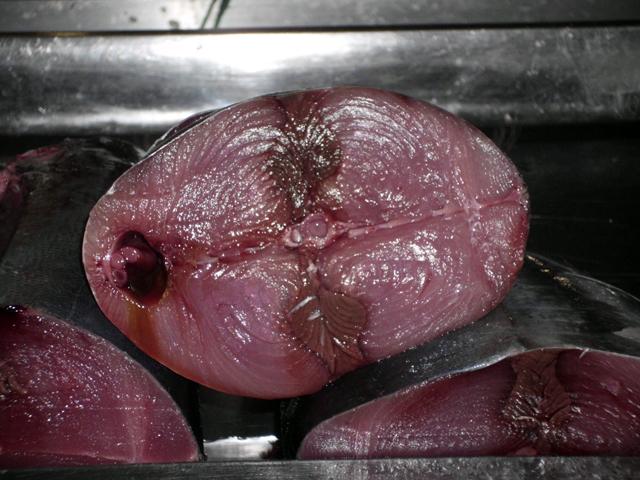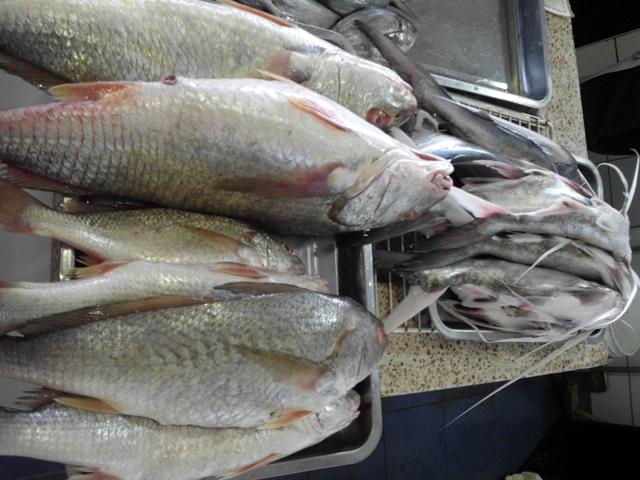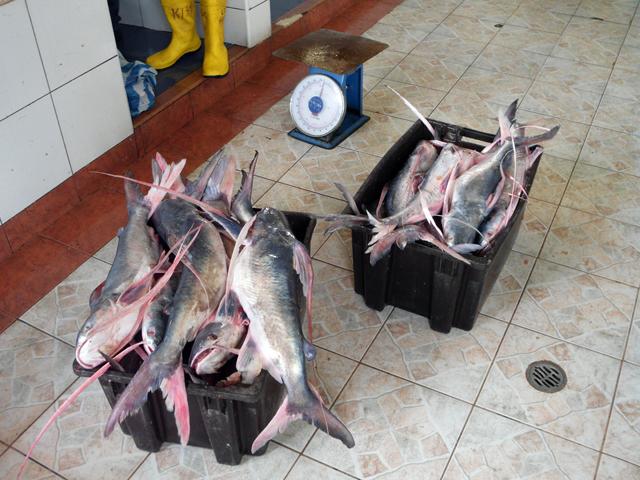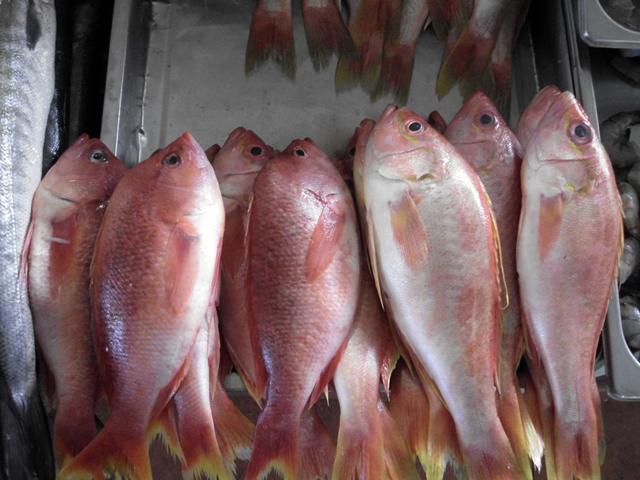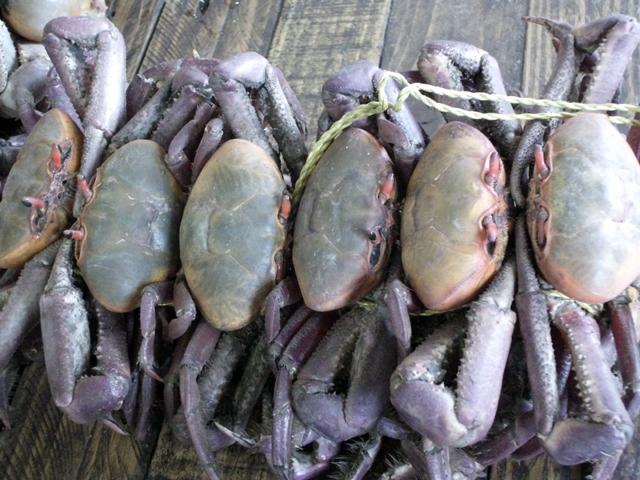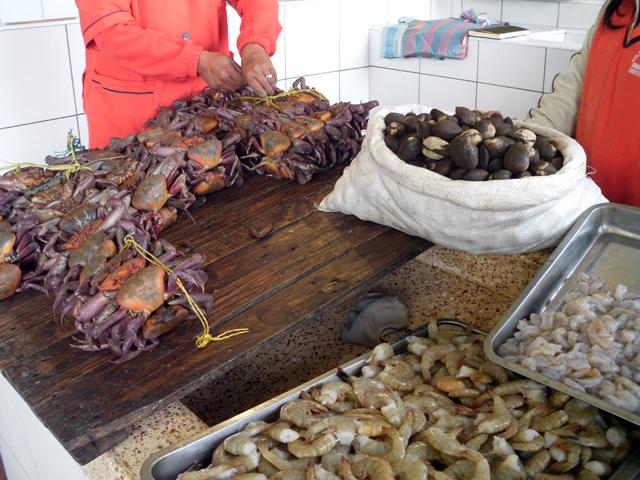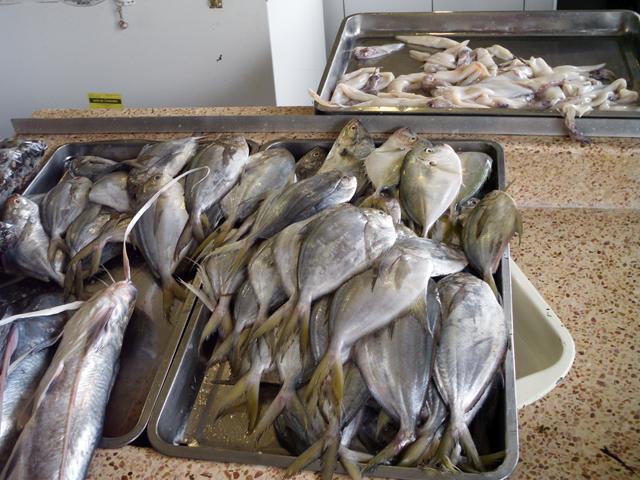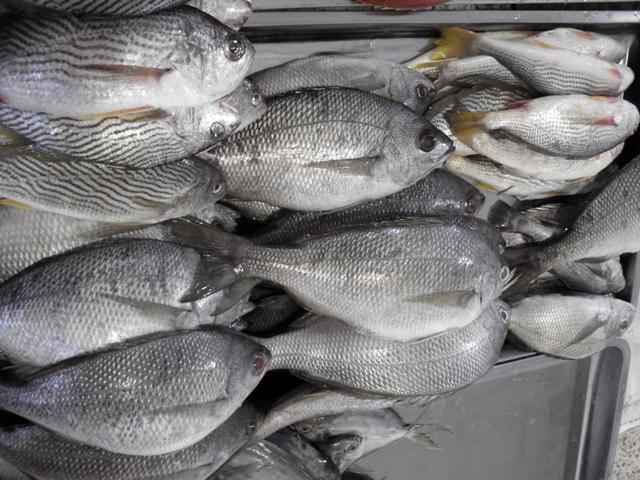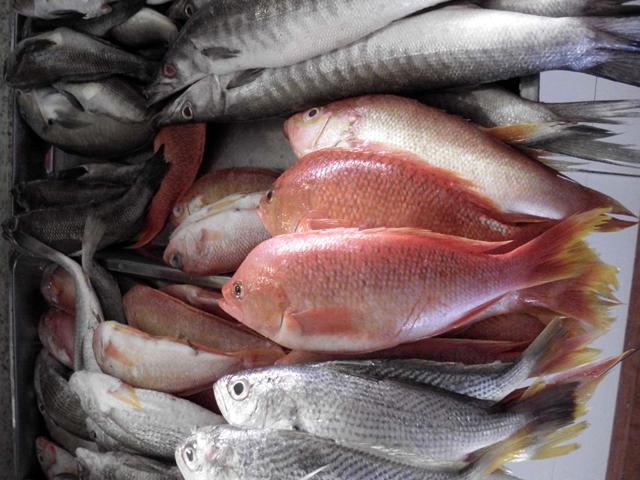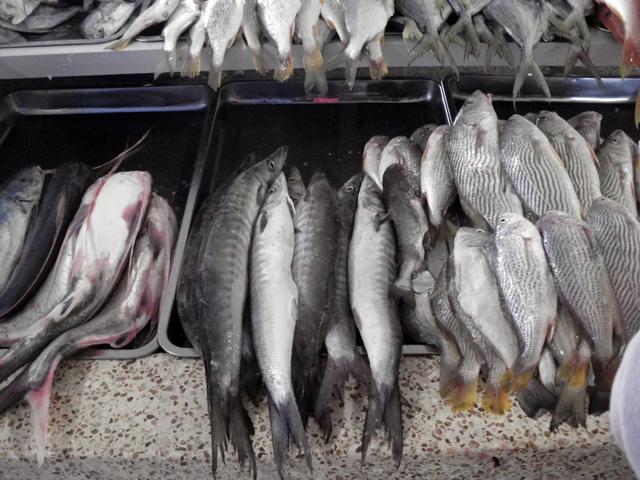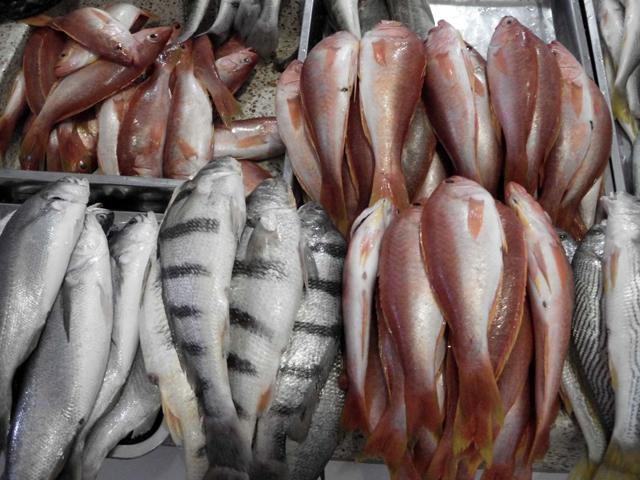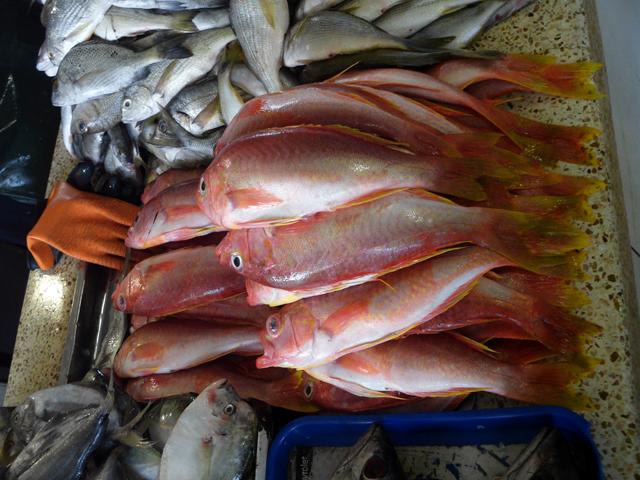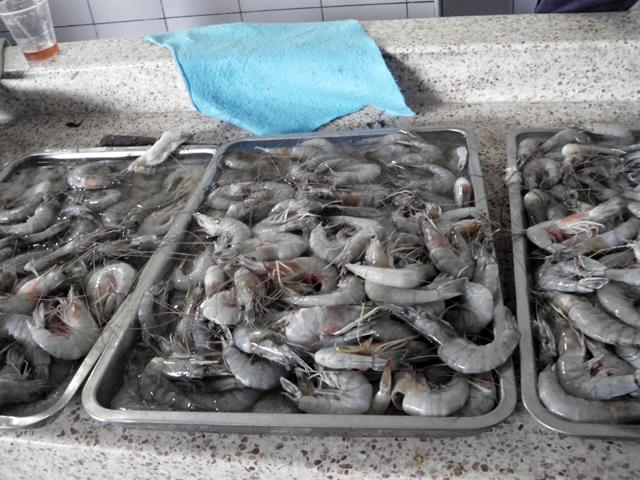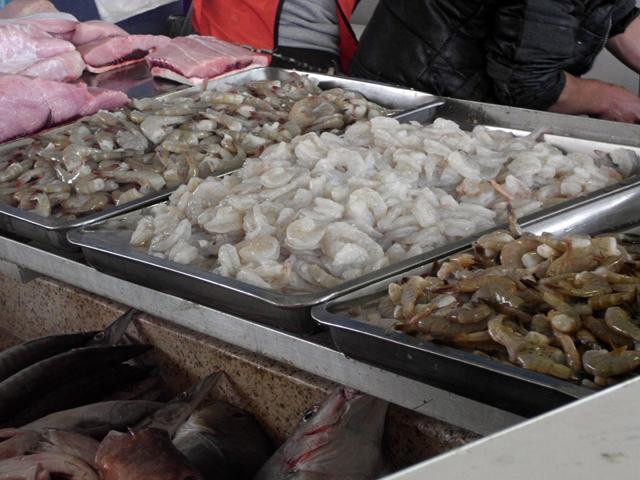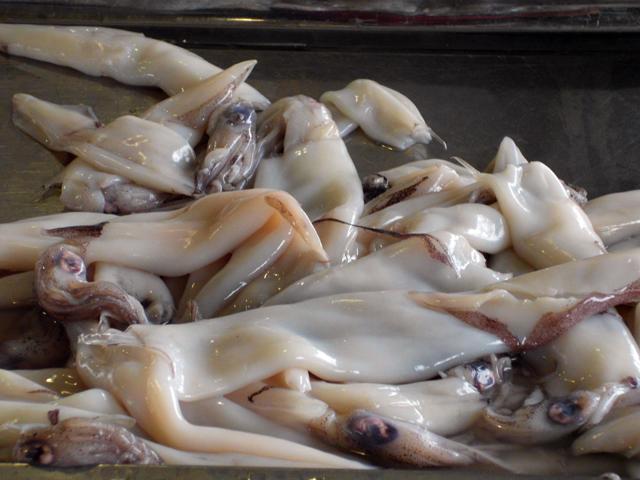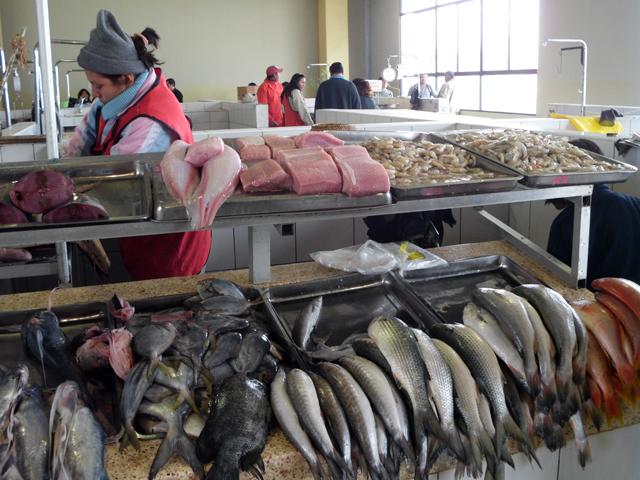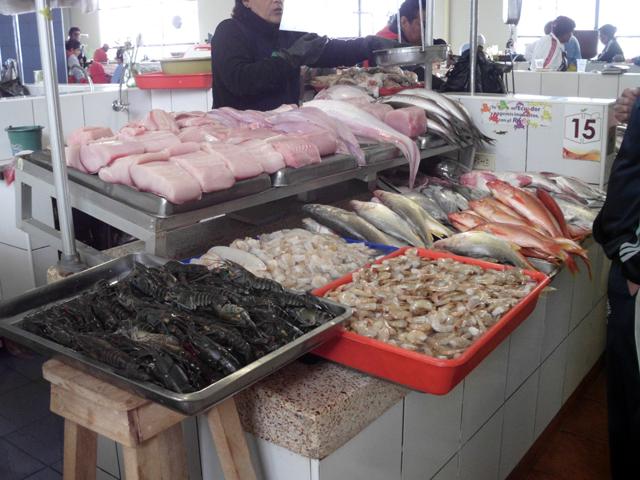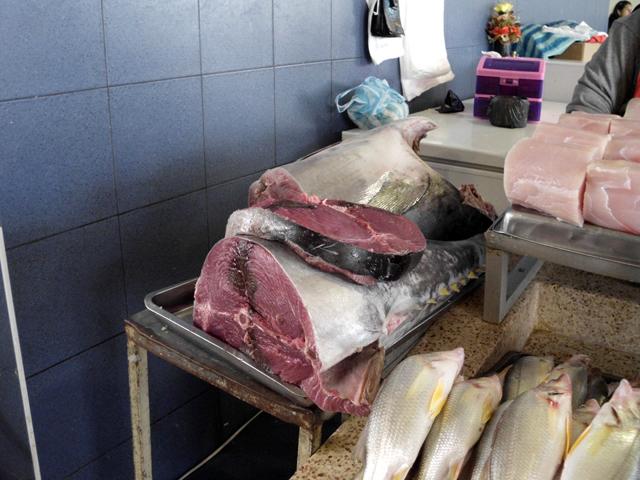-
Posts
2,383 -
Joined
-
Last visited
Content Type
Profiles
Forums
Store
Help Articles
Everything posted by Panaderia Canadiense
-

Looking For Spicing Suggestions for Tea Bread
Panaderia Canadiense replied to a topic in Pastry & Baking
Start with 1/2 tsp if your cinnamon smells strong, and 1 tsp full if your cinnamon seems weak (the age of the spice since grinding has a lot to do with flavour, particularly cinnamon which loses strength quite quickly) -

Looking For Spicing Suggestions for Tea Bread
Panaderia Canadiense replied to a topic in Pastry & Baking
Star anise, cardamon, and ceylon cinnamon all come to mind. Cinnamon with apricot in particular is a lovely combo. -
Here are a few of my recent meals (the ones that aren't cuppanoodles ) Beef tenderloin in red-wine mushroom gravy, cheesy mashed potatoes, obligatory carrots. Corvina Plateada on a bed of noodles with mirepoix and pepper cream sauce What we call PhD Pizza (Piled high and Deep). This one had salami, pepperoni, ham, chorizo, and tenderloin chunks, red and green peppers, black olives, mushrooms, and celery. And because those were heavy meals, a nice Tuna Salad (not quite a Niçoise) with Uvillas and various pickled things.
-
Ecuadorian name: Palma, Palmera English name: I've Got No Idea. I'm thinking some sort of Bream or maybe a Bass? Size: About 700g, about 25 cm This one is a mystery. It was an engaging bright blue colour with gold stripes when it was raw (sorry, no photo - I had a meeting run late and it was in the oven before I got home - I'll try to get one next week at the market.) The flavour and texture were fantastic, and it's definitely a fish I'll be repeating when it's in the catch. Despite being quite large and basslike, it was not terribly boney (just big, obvious bones that lifted out really easily on filleting).
-
Keith - I found that with Canada as well. The country has a huge fishery, both fresh and saltwater, but the majority of what's actually available to the citizens is frozen and filleted (and awful). Good fishmongers, even on the coasts, are few and far between. Ecuador is very refreshing in that the people here simply won't accept frozen anything if they know fresh is available and possible. This means that even here at 10,000 feet of altitude, a good 8 hours hard drive from the nearest port, there's still fish and seafood that's less than 24 hours out of the sea. Liuzhou - I'll try to get a picture of the actual fishmongery area of the market next Sunday (I'll have to cross the market floor and go up to the food court area to get it). The Mercado Bolívar is one of the largest enclosed markets in the city, covering about 2 standard blocks; it's a pretty neat place just on general principle and on those mornings if I weren't also rushing to the Mayorista farmer's market (10 hectares or so), I could easily spend an entire day in there... Compared to the rest of the market, the fishmongers is fairly small; compared to other fishmongers in the city, though, it's huge. Here's some more of what I've been eating on Sundays - I really need to download my camera more often! Ecuadorian name: Corvina Plateada English name: Queen Corvina, Whitefin Weakfish Size: About 900g, about 40 cm long Let's start out with a picture of the selection that Sunday.... This is a fairly representative look at the catch of the week, which was heavy on the Picudo (small Barracudas) and Pargo (Snappers of various stripes). I think we ended up with the Corvina because we were being perverse, but it also looked really good. Here's the raw fish. I'm struck by how much it resembles a trout, actually. Corvina belong to the Drum/Croaker family. This one was so big that it didn't fit even on my baking trays, so it was beheaded and stuffed in my biggest casserole, which just fit it. It's stuffed with Bearss lemons from my own tree, fresh herbs, and covered with Valencia oranges from over the mountain. It was absolutely delicious. The meat has almost no character of its own (very very mild flavour) which means it soaked up the citrus flavours and the herbs in the stuffing and came out like a meat-textured baked orange and rosemary thingie.
-
My go-to is honey whole wheat bread, generous amounds Javierino (a sharpish cheese similar to aged Colby), Angochagua (a very funky aged Ecuadorian cheese), and sauerkraut. I don't butter my bread, though; I use a bit of sunflower-olive oil in the pan instead.
-

The cake, the whole cake, and nothing but the cake
Panaderia Canadiense replied to a topic in Pastry & Baking
I have three true cakes that stand absolutely on their own without icing or glaze: Sweet corn shortcake (I think my recipe is kicking around the eGullet somewhere) Orange Spice Cake Death By Chocolate Zucchini Cake (although I often gild the lily by pouring liquified truffle over it....) -
Lindsey: how many tomatoes in a punnet? It's a term I haven't heard since my Gran passed, and she was always very vague about it....
-
Ecuadorian name: Atún English name: Tuna, probably Bigeye but possibly Albacore Size: steaks cut at 1/3 lb each, which I then cut into halves. Occasionally we splurge on the large fin-fish; the tuna steaks looked particularly good and made two week's worth of meals because they were so huge that we couldn't face eating them whole.... The first round of tuna was scarfed faster than I could photograph it. The second were pan-seared with teriyaki glaze. Extremely tasty.
-
Here's a fun one - while Mom and I were debating another Sole, a vendor picked up this fish and suggested we try it out. When I asked what it was, she insisted that it's what I was looking for - a Sol! Ecuadorian name: Sol English name: Brassy Grunt Size: about 30 cm long, about 700 g Overall a very tasty fish, even cooked simply. I'm thinking that when it gets non-windy enough to grill, this one will be good cooked on the charcoal UFO.
-
For some reason I originally read this as 'smokey cheese' instead of scotch, and it sounded wonderful. I'm not a drinker, but I bet the right cheese would get along quite well with FN. Any cheese suggestions? If you can find it, full-aged (black rind) Amalattea would go beautifully. So would Manchego, I think, and possibly also Angochagua.
-
I've recently started to add a bit of finely chopped celery to my pizzas; it adds a really interesting crunch without detracting from the other flavours that are going on there.
-
The day of the photos, my favourite fishmonger had a lovely Lenguado, which is a black rock sole. I'd been waiting a while for a fish like this one, mostly because lemon sole is something I remember very fondly from my childhood. I used tiny Bearss lemons from the tree out front of my house. Ecuadorian name: Lenguado English name: Sole Size: about 35 cm long, about 900 g
-
Apologies for being remiss in posting - life's been busy lately. But not too busy to take the good camera to the market! These were taken just before the softshell veda (catch ban) on blue crabs came on (August 15) - the ban was lifted today, incidentally. The Mercado Simón Bolívar is not the largest market overall in the city, but it is the largest fishmongers. A bit of everything comes through here, some of which is strictly seasonal and others of which are available year-round. Bonitos, both whole and cut. These are gorgeous fish, but too strong for my tastes. Freshwater wise, there are almost always carp and tilapia; catfish often have their own entire stalls. Caldo de Bagre (catfish stew) is a very popular local dish. Corvina and Pargo (rockfish and snapper) are some of the permanent fixtures. When not on ban, crabs are sold in roped skeins of 12 and 24. This stall also has Concha, a type of mangrove clam popular on the grill and for ceviches. The same sellers sometimes have large octopus and smaller squid as well. When the Humboldt current is up, large hardshell Langostina are available. These will be in until at least late October; their season coincides with the migration of the Humpback whales. Smaller than these are the various shrimp and prawns, which at this time of year are coming in from the mangrove forest farms. And then there's the mixed catch.... For an idea of the stalls, here are a few shots. Most specialize either in deep-sea or freshwater catch; a few are more generalized. And to cap off the tour, something quite special. This is a whole Ahi tuna of the type that are normally wholesaled directly to Japan. They rarely appear in the market, and when they do they're expensive. This one was selling for around $20 a pound - to put it in perspective, the day I took photos I could have purchased large blue lobsters for $6 a pound (and I would have, if they hadn't been dead...)
-

Must-have seasonal dishes/meals?
Panaderia Canadiense replied to a topic in Food Traditions & Culture
Coming into summer here, which means shrimp and crab time, on the charcoal grill! When it gets cooler, I'll be craving squash based things. -
No such thing as a too basic question! We all have to start somewhere, and asking when you're stuck is the mark of someone who wants to learn. 1. Start with one type of pastry and work with it until you're completely comfortable with both its basic and advanced applications. For example, start with pâte a choux and work with it until you can make perfect éclairs or choux every time, then work towards divorcées and other more complex choux things. And once you've got that down, start on the next type of pastry. I had the privilege of training with a master patisierre in Canada, and this is how he approached the apprenticeship - I didn't graduate to puff pastries and other Viennoiserie until I had mastered choux. (Incidentally, I did this apprenticeship while still attending high school - Maitre Pierre was very kind in allowing the hours to be flexible so that I could balance patisserie and schoolwork. If you can find a bakery whose sweets you admire, you can try asking the baker if they're willing to do this kind of apprenticeship with you - that way you'd have somebody who does have a good idea of what's right/wrong while you're learning.) If you're going it alone, shortcrust and its variants are probably the easiest starting point; it sounds like that's where you are now if you're playing with tarts. 2. That's how it works. I eat most of my mistakes or disasters or whatever you want to call them; it's fairly rare that something goes so completely sideways that it's inedible. You can also give your edible but imperfect learning pastries away to homeless shelters or similar, if your family and friends are starting to go nuts. The other option is to work to smaller batches - cut the recipes you're testing in half or in quarter and make far fewer units, or if you're testing fillings test the smallest possible version of the recipe. This way you'll end up with fewer test items and you're less likely to burn out your friends and family while you perfect your techniques and flavours. 3. Your own taste is a fairly good guide; you can also search out people who have eaten the pastry in question and ask them what the what. If you can't find a professional copy, but you're working from an established recipe, it shouldn't be too difficult to judge if something is right or wrong. Recipes become established or standardized precisely because they turn out consistent results. Perfect, though, is in the tongue of the eater - it's very subjective in the same way that good/bad is. For example, I make lovely chocolate choux, but my mother hates choux pastry. Hence, even if I do make a perfect one as far as I'm concerned (and I love chocolate choux), it's going to be a bad one for her. 4. This is a really objective field again, but I approach it in the same way as a perfumier might - base note, midnote, accent, top note. It's worthwhile to investigate the classic flavour pairings - white chocolate and raspberry (sweet and creamy with sharp), for example, or pear with sharp cheese (mild and fruity with cheesy sour / bitter / funky), to see what's going on flavour-wise; this will help to inform your own choices. I don't have any resources on this, but I do recall a thread on classic flavour pairings kicking around here somewhere, and it did have some references. The Confections and Daily Sweets threads are also a good resource for flavour pairings , as many of the chocolatiers and bakers here play with unusual flavour combos and then report on it. Hope this helps.
-
Golden mushroom soup, tapenades and mushroom patés, and drying would be my votes. Although, like Dave Hensley, I'd probably just gorge myself on them until they were all gone. Lightly sautéed in a bit of butter on rye toasts, mmmmm. Dangitall, now I have an urge to go shrooming! (Although I haven't a snowball's chance in the furnace of finding chantrelles, I've got a good shot at some good slimecaps right now, and possibly puffballs.....) ETA - you could probably also try preserving them in good olive oil - then you'd end up with both the chantrelles and a tasty chantrelle-flavoured oil to cook with later on....
-
I'm not sure what you mean. Are you saying the mould is forming because I touched the cheese? How would that work? I'm not sure exactly how it works, it's just something I've noticed whilst living in a hot and humid climate and handling cheese. If I touch the cheese directly with bare hands, no matter how clean they are, mould forms more rapidly than if I use a chunk of wax paper or some similar between my hands and the cheese.
-
Here's a question - when you grate, do you just grab the cheese and shred away? Or do you keep some of the cheese's wrapper between your hand and the cheese itself? I ask, because I used to have exactly this problem with Parmesan and Romano, but once I started trying to not touch the actual cheese with my actual hands, it was less of an issue. I use a chunk of wax paper as a cheese grip.
-
Even with fairly complete combustion, CO2, CO, SO2, NO2, and soot are produced, just in very very small quantities. In the case of a kitchen stove without an outside-venting hood, this would only be problematic if the kitchen itself is also poorly ventilated. In general, leaving the kitchen window open a crack for air exchange is more than sufficient to allow the very small quantities of gas combustion byproducts to dissipate.
-

Why did you choose the cooking life?
Panaderia Canadiense replied to a topic in Food Traditions & Culture
It's a deceptively difficult question, David - I think a lot of us are going to have a hard time putting it into words adequate to express the obsession. Rather than a chef, I'm a baker, a profession that has been in my family for more than 500 years. So partly, I'm in it for the tradition - the family seems to produce only one baker/patissiere per generation, and it certainly looks like I'm it for mine - I don't want to break that chain. For me, there's an almost irresistible call to the oven when I see sacks of flour and sugar - I can't help but want to make something from it. There is something very satisfying in turning what looks insignificant into something spectacular. Since what I do is primarily catering bakery, I get to do something slightly different every single day (I've held down office jobs, and the monotony of it makes me want to shoot myself) and on special occasions I get to play with my food in a more literal sense in terms of the creation of unique cake decorations in pastillage and whatnot - there are very few professions where that's not only possible but encouraged! This is, I think, a big part of why I keep at it. And even though I know exactly what chemical reactions are going on when I set bread to bake, it still astonishes and pleases me greatly to watch it spring and brown in the oven... -
See The Sexy Tableware Topic for my dishes uncluttered by food. They're heavy hand-painted Cuenca pottery.
-
Looks great! It reminds me of my life-long favorite--cream cheese, bacon, and tomato. (As I progressed into middle adulthood, goat cheese occasionally took the place of cream cheese.) What kind of bread did you use this time? Looks like White put Brown at an early disadvantage (the backgammon game, not the bread). Simple honey whole wheat this go round, which seems to be the perfect foil for the other ingredients. And I won that game, even though I was bumped early on....


